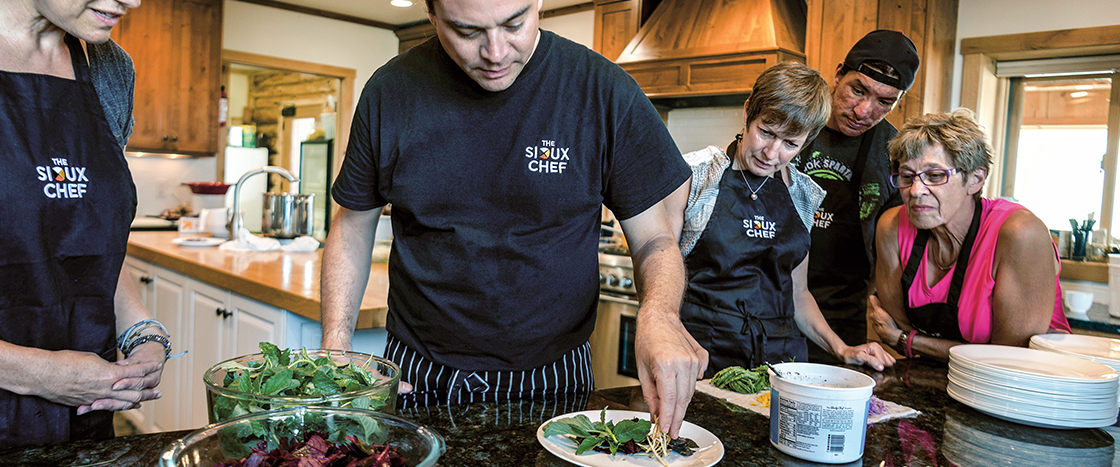As a chef, Sean Sherman noticed something strange. Throughout the United States, he found restaurants serving food from many different cultural groups except one—Native American. Sherman decided to do something about it. In August 2020, he opened a training center in Minneapolis, Minnesota. It’s the country’s first Indigenous Food Lab.
Sherman is a member of the Oglala Lakota Nation. It’s one of 665 Indigenous Nations across the U.S. Each Nation has its own food traditions based on local plants and animals. “In every region, Indigenous food is unique,” says Sherman.
Sean Sherman is a chef. He noticed something strange. He looked at restaurants throughout the United States. The restaurants served food from many different cultural groups. But none of the restaurants served Native American food. Sherman decided to do something about it. Sherman opened a training center in August 2020. The training center is in Minneapolis, Minnesota. It’s the first Indigenous Food Lab in the U.S.
Sherman is a member of the Oglala Lakota Nation. This Nation is one of 665 Indigenous Nations across the U.S. Each Nation has its own food traditions. These traditions are based on local plants and animals. “In every region, Indigenous food is unique,” says Sherman.

